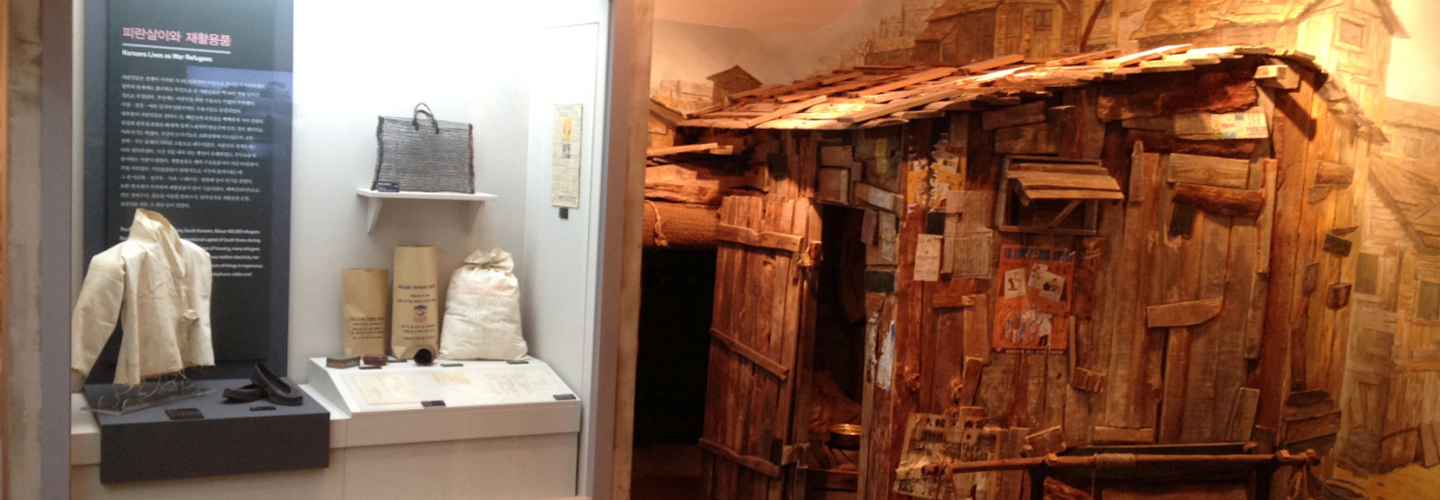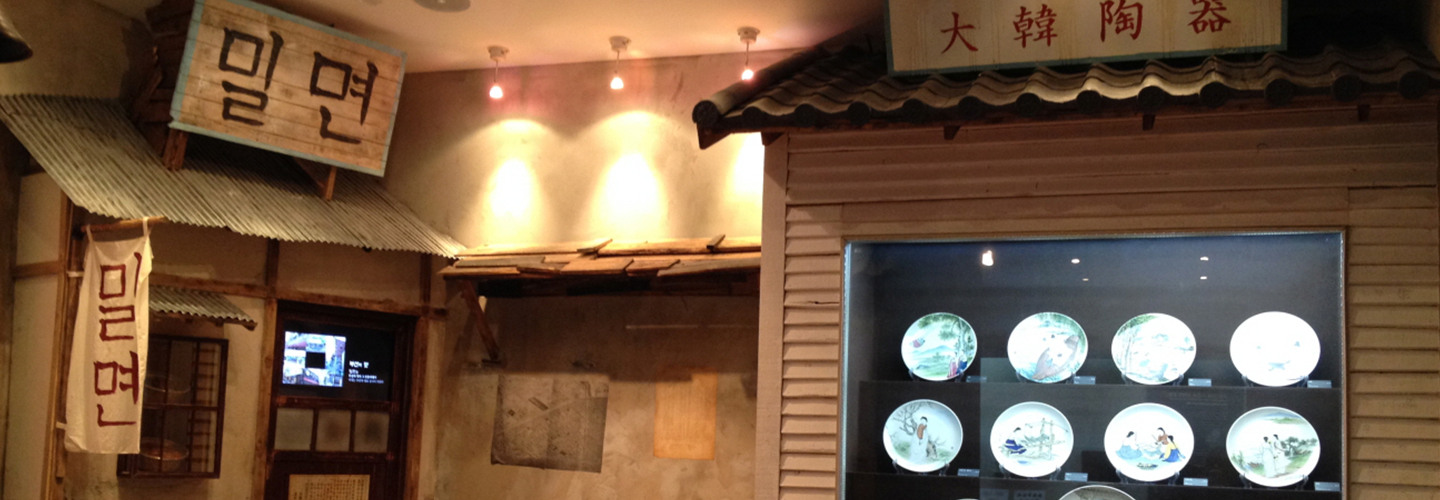Exhibition Hall

Exhibition Hall Introduction
The building currently serving as the exhibition center is a single-story brick structure, originally built as the residence for the Chief Prosecutor of the Busan High prosecutors’ Office. It was opened in September 1987. After the Prosecutor's Office was relocated, the building was repurposed as the Provisional Capital Memorial Hall Video Hall in 2002. It was fully renovated on September 19, 2012, and reopened as an exhibition hall highlighting Busan’s historical role and resilience as the provisional capital during the Korean War. The exhibition room, featuring a variety of artifacts, models, panels, and videos, is organized around two main themes: “War and Life” and “1,000 Days in the Provisional Capital, Busan.”
The first section, War and Life, explores the development of the Korean War as it escalated into an international conflict, along with aspects of everyday life in Busan during its time as the provisional capital. In addition to wartime artifacts, the museum features realistic models of shanty houses, a wartime school, and stalls from the International Market, a wheat noodle eatery, and the Meildawon Café, allowing visitors to vividly experience the everyday lives of wartime refugees. Additionally, videos and interactive kiosks are placed throughout the exhibit to enhance the realism and bring the stories to life.

1,000 Days in the Provisional Capital, Busan highlights the provisional capital period, showcasing major political events as well as wartime administrative and economic shifts in the city. The exhibit also features a wide range of artifacts from that era.
The exhibits feature items such as the Armistice Agreement, the President’s Memorandum on the Transfer of Armed Forces Control, the 1951 government budget, commercial and industrial maps, soju from Daesoon Distillery, and clear creams and combs from Lak Hui Chemical (now LG Chem), offering visitors a clear glimpse into the political, administrative, and economic realities of the period. The exhibit also presents portraits of key political, economic, and cultural figures from the era, alongside various newspaper articles and information on Busan’s post-transformation changes and major institutions in 1950, all accessible through kiosks and large maps.